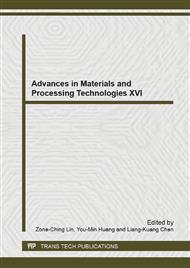p.266
p.274
p.283
p.291
p.299
p.305
p.313
p.322
p.328
Comparison of Cast and Extruded Stock for the Forging of AA6082 Alloy Suspension Parts
Abstract:
High-precision near-net shape parts with excellent surface qualities can be produced with the forging process with a minimum of finishing operations thanks to the good formability of aluminium alloys. There has been a rapid increase in the use of aluminium forgings predominantly in the automotive industry, where weight savings for reduced fuel consumption and exhaust emissions is mandated by legislation. Aluminium forgings provide, in addition to low weight, high strength, good corrosion resistance and a fibrous grain structure to improve fatigue resistance. Typical commercial forging stock is the round bars produced by the extrusion of cast billets. An alternative process route that has received increasing attention in recent years is the casting of forging stock by a horizontal direct chill casting technique to make smaller billets without the need for extrusion to reduce their diameter. The anisotropy imparted to the forging stock via extrusion, often regarded as useful for the forging, is certainly missing in the former. However, cast stock has been reported to be more resistant to the formation of coarse surface grains than the extruded counterpart. The present work was undertaken to compare the casting and extrusion routes for the manufacture of 6082 alloy forging stock.
Info:
Periodical:
Pages:
299-304
Citation:
Online since:
May 2014
Authors:
Keywords:
Price:
Сopyright:
© 2014 Trans Tech Publications Ltd. All Rights Reserved
Share:
Citation:


